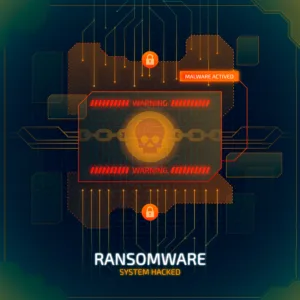
Table of Contents
Introduction
In the realm of cybersecurity, staying ahead of potential threats is most important. With the proliferation of artificial intelligence (AI) and its applications in various domains, including cybersecurity, there arises a need for innovative tools that can aid in identifying vulnerabilities and fortifying defenses. Microsoft PyRIT, short for Python Red Team Infrastructure Toolkit, emerges as a powerful solution tailored specifically for red teaming exercises, leveraging the capabilities of generative AI.
In this blog post, we delve into the intricacies of Microsoft PyRIT, exploring its features, significance, and implications in the ever-evolving landscape of cybersecurity.
Understanding Red Teaming
Before delving into the nuances of Microsoft PyRIT, it’s crucial to grasp the concept of red teaming. Unlike traditional penetration testing, which focuses on assessing the security of a system or network through simulated attacks, red teaming adopts a holistic approach, emulating real-world adversaries.
Red teams are tasked with identifying vulnerabilities, exploiting them, and gaining unauthorized access to sensitive assets, all while adhering to ethical standards.
Generative AI in Cybersecurity
The integration of AI, particularly generative AI, has revolutionized various aspects of cybersecurity. Generative AI models, such as GANs (Generative Adversarial Networks) and VAEs (Variational Autoencoders), have demonstrated remarkable capabilities in generating realistic data, mimicking human behaviors, and even crafting sophisticated attacks.
By harnessing the power of generative AI, red teams can enhance their simulation capabilities, creating more realistic and challenging scenarios for testing defensive mechanisms.
Microsoft PyRIT: Unleashing the Power of Generative AI
Microsoft PyRIT emerges as a cutting-edge toolkit designed to empower red teams with advanced capabilities facilitated by generative AI. Developed by Microsoft Research, PyRIT offers a comprehensive suite of tools and frameworks tailored for orchestrating red teaming exercises effectively.
Let’s explore some key features and components of PyRIT:
1. Scenario Generation:
At the core of PyRIT lies its ability to generate diverse and realistic attack scenarios using generative AI models. By leveraging techniques such as natural language processing (NLP) and deep learning, PyRIT can craft sophisticated attack narratives, simulate adversary behaviors, and generate convincing phishing emails, malware payloads, and social engineering tactics. This enables red teams to emulate complex cyber threats and assess the resilience of defensive measures in a controlled environment.
2. Dynamic Infrastructure Provisioning:
PyRIT facilitates the seamless provisioning of dynamic infrastructure environments for red team operations. Whether it’s setting up virtualized networks, deploying honeypots, or orchestrating simulated attack campaigns, PyRIT automates the process of infrastructure management, allowing red teams to focus on strategic planning and execution. The scalability and flexibility offered by PyRIT enable practitioners to simulate diverse attack scenarios across different environments with ease.
3. Adversarial Machine Learning:
In the cat-and-mouse game of cybersecurity, adversaries are constantly evolving their tactics to evade detection and bypass defensive measures. PyRIT incorporates adversarial machine learning techniques to enhance the realism and sophistication of simulated attacks. By training AI models to adapt and learn from defensive responses, PyRIT enables red teams to iteratively refine their tactics and stay ahead of emerging threats. This iterative feedback loop between offense and defense fosters a proactive approach to cybersecurity resilience.
4. Collaborative Red Teaming:
PyRIT fosters collaboration and knowledge sharing among red team practitioners through its intuitive interface and collaborative features. With support for real-time collaboration, version control, and centralized repositories, PyRIT streamlines teamwork and facilitates the exchange of insights, techniques, and best practices within the red teaming community. This collaborative ecosystem enhances the collective intelligence of red teams and fosters innovation in adversarial simulation techniques.
Significance and Implications
The advent of Microsoft PyRIT represents a significant milestone in the field of red teaming and cybersecurity. By harnessing the power of generative AI and integrating cutting-edge technologies, PyRIT equips red teams with the tools and capabilities needed to simulate realistic cyber threats and assess organizational resilience effectively.
The implications of PyRIT extend beyond individual red team exercises, influencing the broader cybersecurity landscape in the following ways:
1. Enhanced Preparedness:
By enabling red teams to simulate sophisticated cyber threats, PyRIT helps organizations enhance their preparedness and resilience against evolving attack vectors. The realistic scenarios generated by PyRIT provide valuable insights into potential vulnerabilities and enable proactive mitigation strategies.
2. Improved Detection and Response:
The adversarial machine learning capabilities of PyRIT empower defenders to refine their detection and response mechanisms by iteratively analyzing simulated attacks and identifying patterns indicative of malicious activity. This iterative approach enhances the efficacy of threat detection and enables faster response times.
3. Advancement of AI-driven Security:
PyRIT exemplifies the convergence of AI and cybersecurity, paving the way for the development of AI-driven security solutions. By leveraging generative AI for red teaming purposes, PyRIT demonstrates the potential of AI in augmenting human capabilities and addressing the evolving challenges of cybersecurity.
Conclusion
In the ever-evolving landscape of cybersecurity, the emergence of innovative tools like Microsoft PyRIT underscores the importance of staying ahead of adversaries. By harnessing the power of generative AI, PyRIT empowers red teams with advanced capabilities for simulating realistic cyber threats and assessing organizational resilience.
As organizations continue to confront increasingly sophisticated cyber threats, tools like PyRIT play a pivotal role in enhancing preparedness, improving detection and response, and driving innovation in AI-driven security solutions.
As we embrace the era of AI-enabled red teaming, collaboration, and knowledge sharing remain essential pillars for staying resilient in the face of cyber adversaries. Microsoft PyRIT stands as a testament to the transformative potential of AI in fortifying defenses and safeguarding digital assets in an interconnected world.
Frequently Asked Questions (FAQs)
1. What is Microsoft PyRIT?
Microsoft PyRIT, short for Python Red Team Infrastructure Toolkit, is a sophisticated toolkit developed by Microsoft Research specifically for red teaming exercises in cybersecurity. It leverages generative AI and advanced automation capabilities to simulate realistic cyber threats and assess organizational resilience.
2. What are the key features of PyRIT?
PyRIT offers a comprehensive suite of tools and frameworks, including scenario generation, dynamic infrastructure provisioning, adversarial machine learning, and collaborative red teaming features. These features enable red teams to emulate complex cyber threats effectively and enhance their simulation capabilities.
3. How does PyRIT utilize generative AI in red teaming?
PyRIT harnesses the power of generative AI models, such as GANs (Generative Adversarial Networks) and VAEs (Variational Autoencoders), to generate diverse and realistic attack scenarios. By training AI models on real-world data, PyRIT can craft convincing phishing emails, malware payloads, and social engineering tactics, making red team exercises more challenging and insightful.
4. Can PyRIT automate the provisioning of infrastructure for red team operations?
Yes, PyRIT facilitates the seamless provisioning of dynamic infrastructure environments for red team exercises. It automates tasks such as setting up virtualized networks, deploying honeypots, and orchestrating simulated attack campaigns, allowing red teams to focus on strategic planning and execution rather than infrastructure management.
5. How does PyRIT support adversarial machine learning?
PyRIT incorporates adversarial machine learning techniques to enhance the realism and sophistication of simulated attacks. By training AI models to adapt and learn from defensive responses, PyRIT enables red teams to iteratively refine their tactics and stay ahead of emerging threats. This iterative feedback loop fosters a proactive approach to cybersecurity resilience.
6. Is PyRIT suitable for collaborative red teaming exercises?
Yes, PyRIT fosters collaboration and knowledge sharing among red team practitioners through its intuitive interface and collaborative features. With support for real-time collaboration, version control, and centralized repositories, PyRIT streamlines teamwork and facilitates the exchange of insights, techniques, and best practices within the red teaming community.
7. What are the implications of using PyRIT in cybersecurity?
The integration of PyRIT in cybersecurity initiatives enables organizations to enhance their preparedness, improve detection and response capabilities, and drive innovation in AI-driven security solutions. By simulating realistic cyber threats and assessing organizational resilience, PyRIT contributes to a proactive and adaptive approach to cybersecurity.
8. Is PyRIT open-source or commercially available?
As of now, PyRIT is developed and maintained by Microsoft Research. While it may not be open-source, organizations interested in utilizing PyRIT for red teaming exercises can explore licensing options or collaborations with Microsoft Research for access to the toolkit.
Read more on https://cybertechworld.co.in for insightful cybersecurity related content.




















Thanks for sharing. I read many of your blog posts, cool, your blog is very good.
One thing I would like to say is that often before obtaining more computer system memory, consider the machine in to which it can be installed. In the event the machine is usually running Windows XP, for instance, a memory limit is 3.25GB. Installing in excess of this would merely constitute some sort of waste. Be sure that one’s mother board can handle this upgrade volume, as well. Good blog post.
very good put up, i actually love this web site, carry on it
I was wondering if you ever thought of changing the page layout of your blog? Its very well written; I love what youve got to say. But maybe you could a little more in the way of content so people could connect with it better. Youve got an awful lot of text for only having one or 2 pictures. Maybe you could space it out better?
Things i have generally told individuals is that while looking for a good on-line electronics retail outlet, there are a few factors that you have to take into account. First and foremost, you need to make sure to find a reputable along with reliable shop that has gotten great critiques and classification from other individuals and market sector leaders. This will ensure that you are getting along with a well-known store to provide good program and help to its patrons. Many thanks for sharing your notions on this site.
you’ve gotten a fantastic weblog right here! would you wish to make some invite posts on my weblog?
Your article helped me a lot, is there any more related content? Thanks!
Free Fire – https://freefire.video